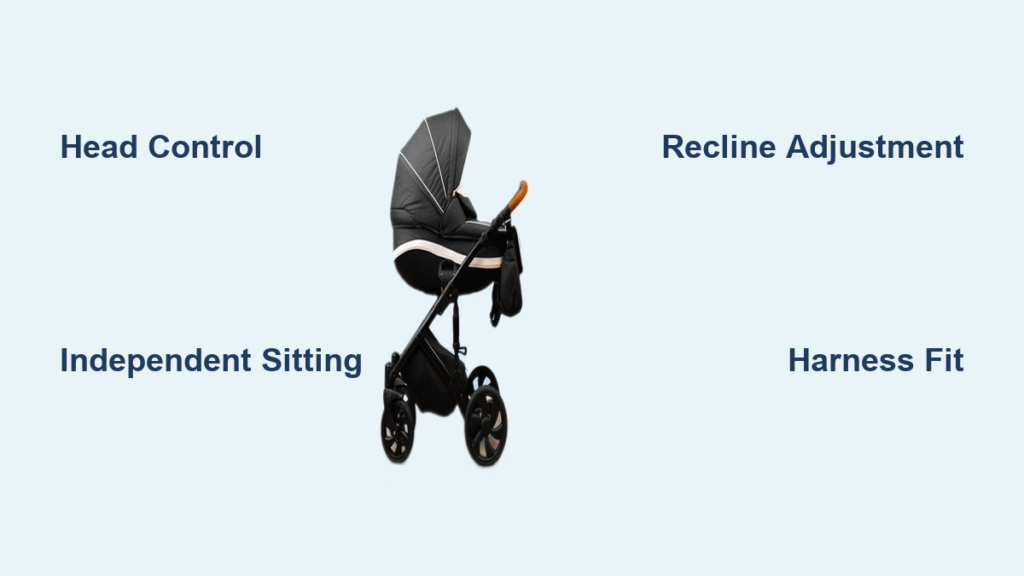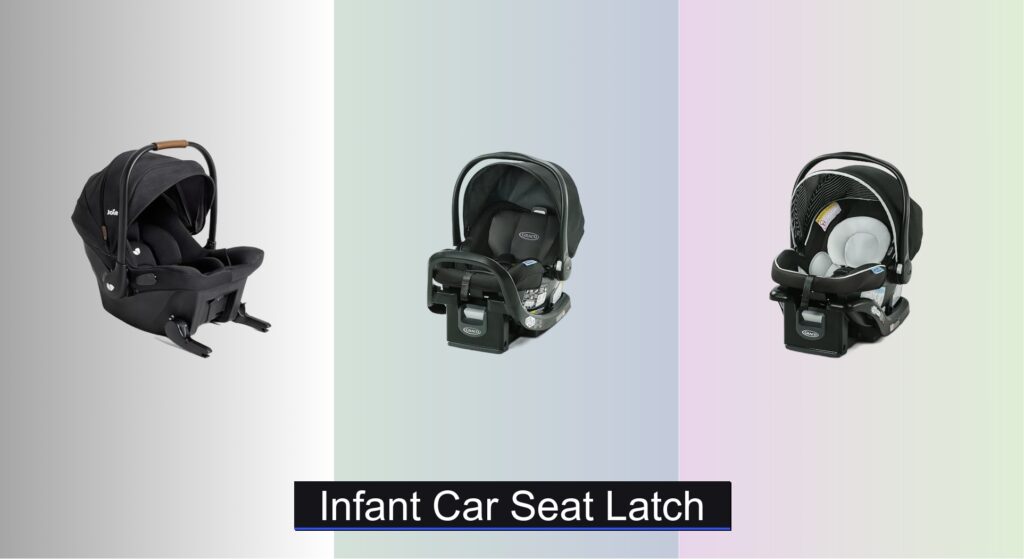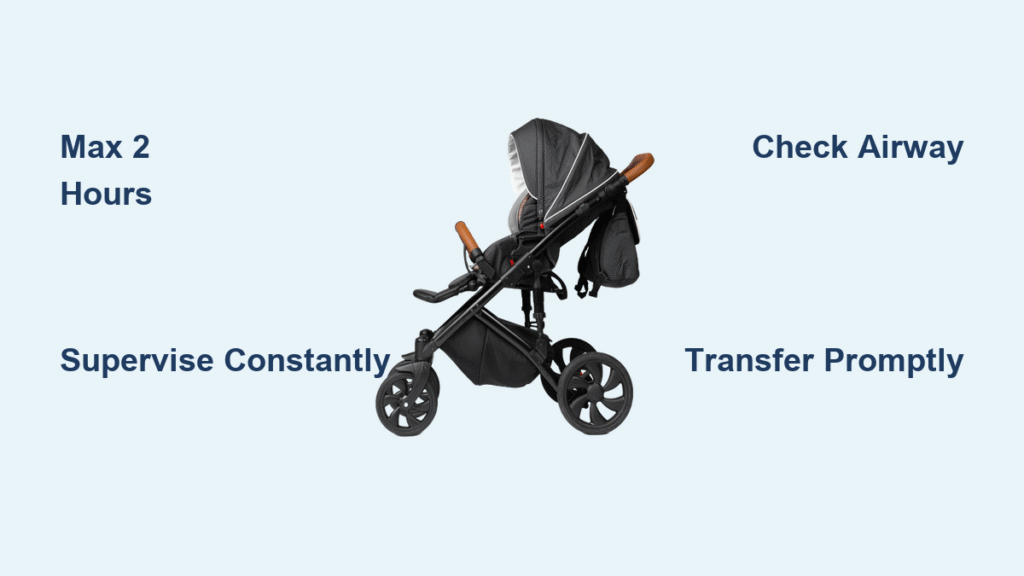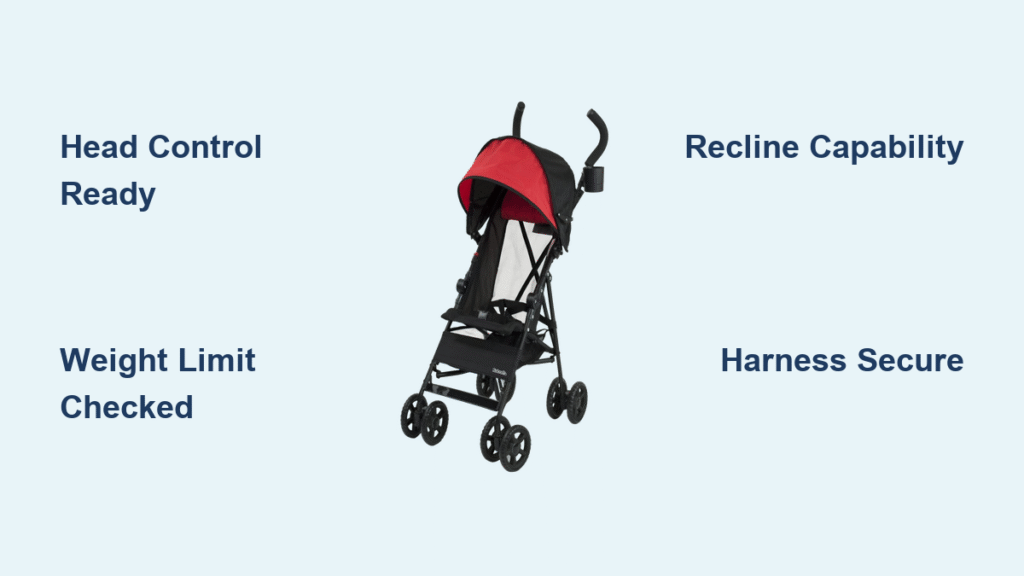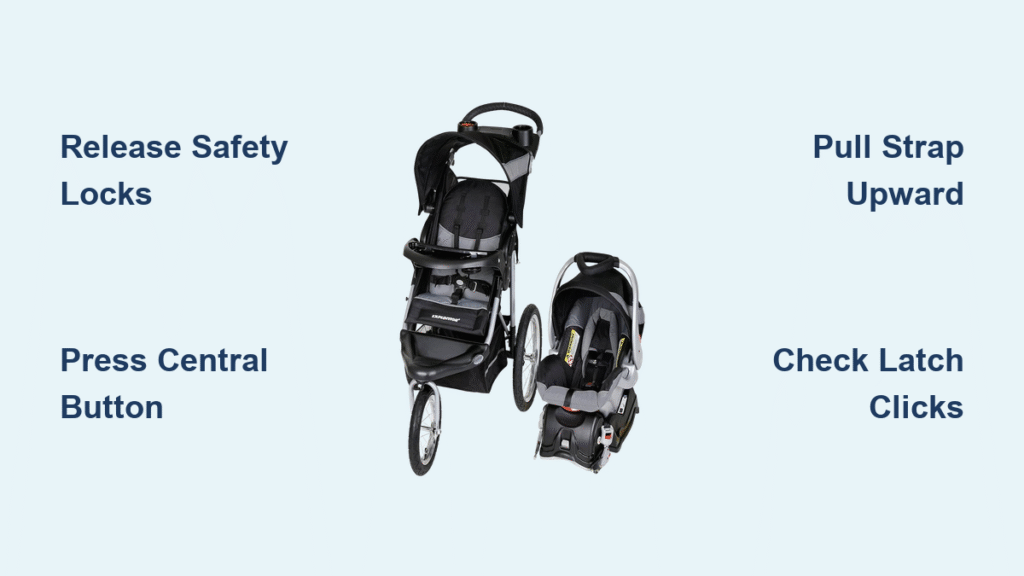You’ve packed the diaper bag, grabbed your keys, and finally feel ready for that first neighborhood stroll—only to wonder if your baby’s ready for the stroller seat. This question keeps countless new parents awake at night, especially when friends’ babies seem to graduate to upright seating at different ages. The truth? Your baby’s readiness depends on specific developmental milestones, not just calendar age. By understanding these markers and following a proven transition protocol, you’ll know exactly when your little one can safely enjoy the view from an upright stroller seat.
Most parents mistakenly believe age alone determines stroller readiness, but physical development tells the real story. Your baby needs rock-solid head control and independent sitting ability before safely transitioning to an upright position. Waiting for these critical milestones prevents potential strain on developing neck muscles and spine, ensuring every outing remains comfortable and safe. Let’s explore the precise indicators that reveal when your baby can sit up in stroller safely.
Critical Physical Milestones for Stroller Readiness

Your baby’s journey to upright stroller seating follows a predictable physical development path. The key lies in two non-negotiable milestones: rock-solid head control and independent sitting ability. These abilities signal that your baby’s neck muscles, spine, and core strength have developed enough to handle the demands of an upright position.
Most babies achieve initial head control between 3-4 months, but this early ability isn’t enough for safe stroller use. You need steady, consistent head control without any bobbing or wobbling—the kind that develops closer to 6 months. Independent sitting follows shortly after, typically emerging between 6-8 months, though some babies master this skill as early as 5-7 months. These milestones work together to create the stability required for safe upright stroller seating.
Test Your Baby’s Readiness Today
Before transitioning from bassinet or car seat mode, perform these simple assessments at home. These tests reveal whether your baby has the physical strength and stability for safe upright stroller seating.
Head Control Assessment
Place your baby on your lap with your hands supporting their ribcage. Observe their head stability—it should remain steady without shaking or wobbling. Check for a visible gap between their chin and chest when sitting upright. Gently rock your baby side to side; their head should stay aligned with their body center throughout the movement. If their head bobs or falls forward during this test, they need more time before upright stroller seating.
Balance Check for Sitting
Position your baby in a slightly reclined position using a bouncer seat or supported sitting arrangement. Look for straight alignment from head through spine to tailbone. Ensure they don’t lean excessively to either side and maintain symmetrical, balanced posture without slumping forward or sideways. If your baby consistently slides down or leans to one side, they lack the core strength needed for upright stroller positioning.
Age-Based Stroller Guidelines

Understanding age-specific recommendations helps you plan your stroller usage timeline while prioritizing safety at every stage.
Newborn Phase (0-3 Months)
During these early weeks, your baby requires full neck and head support at all times. Use only fully reclined positions with these configurations:
– Bassinet attachment for lie-flat positioning
– Fully reclining seat with secure harness system
– Infant car seat (with strict time limitations)
Never attempt upright seating during this phase, as your baby’s developing spine and neck muscles cannot support their head weight. Even brief upright positioning can cause neck strain and breathing difficulties in newborns.
Transitional Phase (3-6 Months)
This period marks cautious experimentation with slightly reclined positions. Your baby must demonstrate consistent head control before attempting any position changes. Start with the most reclined seat angle available, avoiding fully upright positioning. Limit initial sessions to 10-15 minutes while closely monitoring for signs of fatigue or discomfort. If your baby shows any signs of head bobbing or distress, return to a more reclined position immediately.
Ready for Upright (6+ Months)
Once your baby sits independently without support and maintains strong head control throughout the ride, full upright seating becomes appropriate. This milestone typically occurs after 6 months, but individual variation is normal. Some babies may be ready slightly earlier, while others need additional time. Don’t rush this transition—wait until your baby consistently demonstrates both milestones before attempting full upright stroller seating.
Safe Transition Protocol
Moving from reclined to upright seating requires patience and careful observation. This three-phase approach ensures your baby’s comfort and safety throughout the transition.
Phase 1: Initial Recline (3-6 Months)
Begin with the most reclined seat position available. Ensure your baby’s head doesn’t flop forward during movement. Limit initial sessions to 10-15 minutes while watching for signs of fatigue or discomfort. This phase builds tolerance for the new position without overwhelming developing muscles. If your baby seems content and maintains good head control, you can gradually extend session duration over several weeks.
Phase 2: Moderate Recline
Gradually increase the recline angle by 1-2 notches as your baby demonstrates consistent head control. Maintain close observation throughout each session, extending duration gradually based on your baby’s comfort level. Watch specifically for head control consistency throughout the entire ride. If your baby starts showing signs of fatigue or head wobbling, return to a more reclined position for a few more days before trying again.
Phase 3: Full Upright Achievement
Only progress to full upright positioning after your baby sits independently without support. Ensure the 5-point harness fits snugly without restricting breathing. Start with short trips of 15-20 minutes, continuously monitoring breathing and comfort. This final phase typically occurs around 6-8 months but varies by individual development. Never force your baby into upright seating before they’ve demonstrated the necessary physical readiness.
Daily Safety Checks Before Every Ride

Before each stroller outing, perform these quick safety verifications to prevent accidents and ensure optimal positioning.
Essential Safety Features
Every stroller used for upright seating must include a 5-point safety harness for secure positioning. Adjustable recline settings accommodate your baby’s growth and changing needs. Lockable wheels prevent unintended movement during stops, while sturdy frame construction ensures appropriate weight support. These features work together to create a safe environment for your developing baby.
Pre-Ride Inspection List
Verify all latching mechanisms engage properly with audible clicks. Check harness adjustment for snug fit without restricting breathing. Test brake functionality by attempting to push the stroller while brakes are engaged. Inspect the frame for wear, damage, or loose components. Confirm your baby hasn’t exceeded manufacturer weight or height limits. This 30-second check could prevent serious safety issues during your outing.
Red Flags That Signal “Not Yet”
Certain physical and behavioral indicators reveal when your baby needs more time before upright stroller seating.
Physical Warning Signs
Watch for head bobbing or falling forward during movement—a clear sign of inadequate neck strength. Slumping to either side when seated indicates poor postural control. If your baby’s chin consistently touches their chest, the seat angle needs adjustment or they’re not ready for upright positioning. Difficulty maintaining an upright position throughout the ride signals insufficient core strength. These physical signs should never be ignored—they’re your baby’s way of communicating they need more time.
Behavioral Indicators
Excessive fussiness during stroller use often indicates discomfort from inadequate support. Frequent attempts to escape the harness may suggest poor positioning or readiness concerns. Visible distress or unusual fatigue after short rides warrants immediate reassessment of seating arrangements. Your baby’s behavior provides valuable feedback about their physical readiness—always respect these signals.
Supporting Development Between Stages
Accelerate your baby’s readiness for upright seating through targeted muscle-strengthening activities and developmental support.
Tummy Time Protocol
Implement multiple tummy time sessions daily, starting with 3-5 minute increments and gradually increasing duration. This essential activity strengthens neck, back, and core muscles crucial for stroller seating readiness. Use age-appropriate toys to maintain engagement during these sessions. Consistent tummy time creates the foundation for the head control and core strength needed for safe upright stroller use.
Muscle Building Games
Practice supported sitting with gradual reduction of support over time. Introduce gentle bouncing exercises while holding your baby upright. Play reaching games while your baby is seated to encourage core engagement. These activities build the specific muscle groups needed for safe upright stroller positioning. Make these exercises fun—your baby won’t even realize they’re building the strength required for stroller readiness.
Smart Stroller Shopping for Growth
Selecting a stroller that accommodates your baby’s development from newborn through toddler years prevents expensive replacements and ensures continuous safety.
Convertible Design Features
Look for convertible designs that transition seamlessly from bassinet to upright seat modes. Adjustable features like handle height, seat depth, and harness positions accommodate rapid growth. Verify weight capacity accommodates your child through toddler years, typically up to 50 pounds. Ensure recline range spans from fully flat to fully upright positions. These features ensure your stroller grows with your baby’s developmental needs.
Key Specifications Checklist
Always verify manufacturer age and weight guidelines before purchase. Check specific recline angle measurements to ensure newborn safety. Confirm harness adjustability range accommodates growth spurts. Test compatibility with infant inserts or additional support devices you might need. Investing time in research now prevents safety compromises later as your baby develops.
Special Circumstances Require Extra Care
Certain situations demand modified approaches to stroller seating transitions, requiring additional vigilance and professional input.
Premature Baby Considerations
Use adjusted age calculations based on your baby’s original due date rather than birth date. These babies often require extended bassinet use beyond typical timelines. Consult your neonatologist for specific seating recommendations, paying special attention to any respiratory considerations that might affect upright positioning. Premature babies need extra time to develop the necessary muscle strength for upright stroller seating.
Your Next Steps
Your baby’s readiness for upright stroller seating isn’t a race—it’s a milestone that ensures safety and comfort during your daily adventures together. Trust your observations, perform the readiness tests regularly, and transition gradually using the three-phase protocol. When in doubt, your pediatrician provides personalized guidance based on your baby’s unique development. Most importantly, enjoy these moments of exploration together, knowing you’re providing the safest possible experience for your growing child. Remember that when can baby sit up in stroller depends on individual development, not calendar age—patience ensures both safety and comfort for your little traveler.

